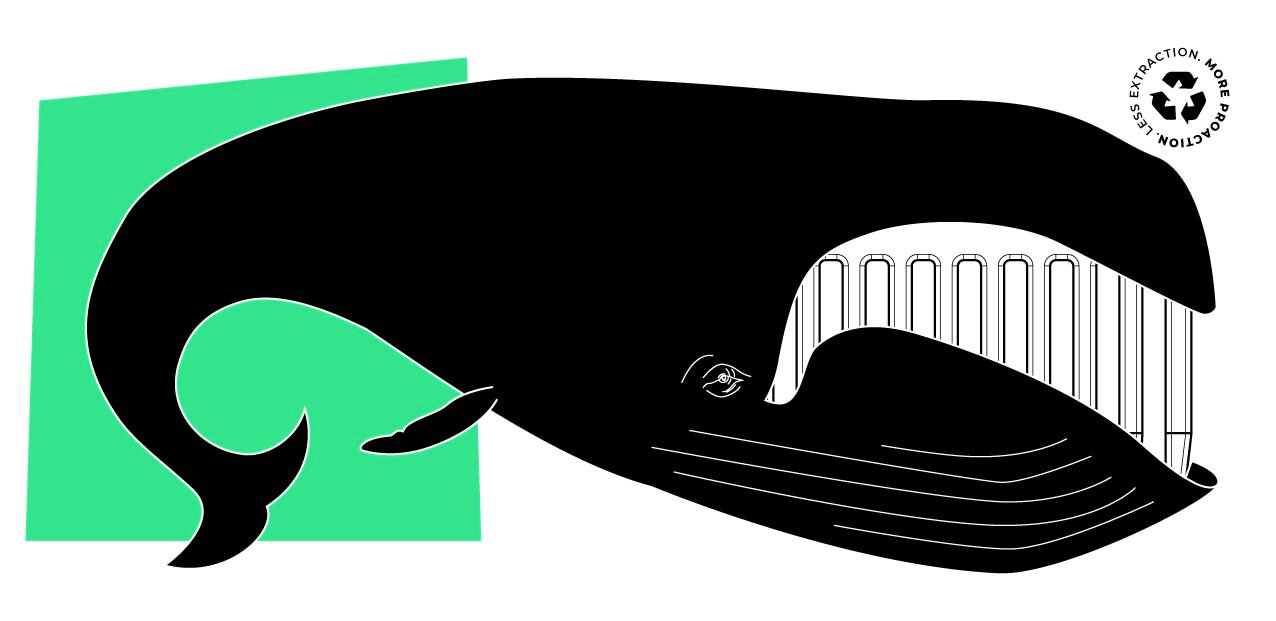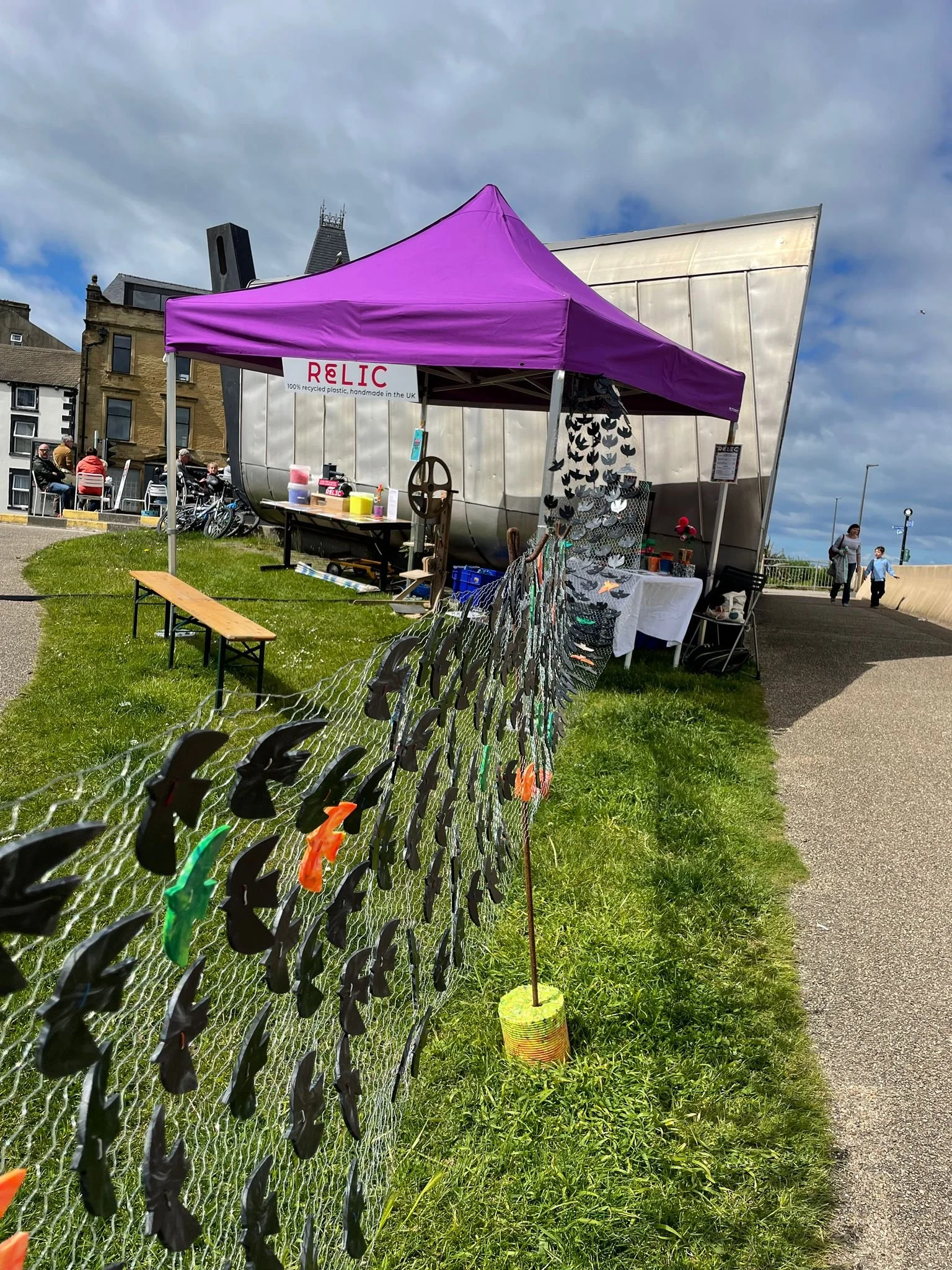What a waste
What a waste! An update on UK plastic recycling and wastage numbers .
An update for 2023 of statistics for plastic waste in the UK.
It is estimated that UK households throw away a staggering 100 billion pieces of plastic packaging a year, averaging 66 items per household per week. In 2021, 2.5 million metric tons of plastic packaging waste were generated in the UK.
What happens to plastic waste in the UK?
In 2021, the recycling rate of plastic packaging waste in the UK stood at around 44 percent, after more or less stagnating in the past five years. Recycling rates also include energy recovery from incineration and plastic waste exports. It is believed that almost half of all UK plastic waste is incinerated for energy recovery, with 25 percent sent to landfills and just 12 percent recycled in UK reprocessing facilities. The remaining waste is shipped abroad.
The Netherlands is now the main destination for UK plastic waste, importing almost one-quarter of shipments in 2022. The UK lacks the infrastructure to deal with the enormous amounts of plastic waste it produces each year, so it has relied on exports for many years. Recent bans and restrictions on waste imports by countries such as China has placed increased pressure on how the UK manages its waste and its government has been urged to invest in recycling infrastructure and new recycling technologies.
The war on plastic waste pollution
Plastics can take centuries to decompose, which is why there are growing concerns in the UK about plastic waste pollution. The UK government has introduced several policies in a bid to combat the scourge of plastic waste, such as the single-use carrier bag charge. This has significantly reduced the number of single-use plastic carrier bags issued by supermarkets. There have been calls for a ban on other problematic single-use plastics, such as cutlery, plates, stirrers, and coffee cups, with Scotland becoming the first part of the UK to implement such a ban. As of October 1, 2023, these materials will also be banned in England. A deposit return scheme (DRS) for drinks containers is also to be introduced across the UK, although its implementation has been pushed to 2025, due to the cost-of-living crisis.
See more in depth details at the source: Statista.com
Whales eat 2,718 shower combs a day!
Whales have a plastic diet.
What a diet!
Turns out whales are eating up to 10 million microparticles of plastic in a day. Thats the equivalent of 43.5kg or 2,718 shower combs. That’s rubbish!
It’s all due to their feeding habits: “[Researchers] found the whales predominantly feed 50 to 250 meters below the surface, a depth that coincides with the highest concentrations of microplastic in the open ocean. The planet’s biggest creature – the blue whale – ingests the most plastic, at an estimated 10 million pieces per day as it feeds almost exclusively on shrimplike animals called krill.”
The problem is that plastic doesn’t really ‘break down’ in the environment. It ‘breaks up’ into tinier and tinier pieces called microplastics. This is then incorporated into the whales diet because ‘The krill eat the plastic, and then the whale eats the krill’.
Just one more reason to phase out our massive dependence on plastic, our over consumption of products using single use plastic, and our terrible system of make-to-waste.
Learn more
news.stanford.edu/2022/11/01/whales-eat-colossal-amounts-microplastics
Murmuration project
Recycled and upcycled art installation and community engagement project for Creative West End Morecambe Eco-project.
The Relic Murmuration is an art piece (and community engagement workshop) commissioned by Creative West End for their eco-projects series in 2020. It was born out of frustration and a desire for connection in the first months of Covid-19.
Read the story below, written by co-director Kiki Kornblatt Callihan.
Proposal
I’ve been mesmerized by Morecambe bay and the murmurations that undulate across the skyline. Maybe you too stand enthralled by their effortless shifting as a unified body, creating flashes of light and shadow over the receding water. Starlings collect gradually throughout the summer, amassing up to 70,000 in a flock and fly together at speeds of 64 kilometres per hour without colliding; changing directions seamlessly, as if in a choreographed dance. I learned a term while reading about the way the birds fly together: “emergent property” in which the whole is much greater than the sum of its parts.
Watch a video of a murmuration at Leighton Moss left.
It got me thinking about community and our personal impact upon it.
When thinking about sustainability; making small changes to reduce our impact on the earth; affecting the climate emergency; overproduction and overconsumption; food water and plastic waste... Many of us feel that the small personal changes we make aren’t enough to impact the larger problem, and that our efforts are for naught.
Did you know that while flying together, starlings only pay attention to at most, 6 or 7 birds at a time? Think about that, a flock of 70,000 birds swooping and dancing together without colliding, and they’re only in direct connection with a handful of the rest, a mere 0.01% of the entire group.
Why, then, do we all feel the changes we make with the hope for a brighter tomorrow are not enough to make an impact? Maybe if we start thinking of the 6 to 7 people around us--a friend, neighbour, family member, colleague or classmate, the lady we see walking her dog each day, the corner shop clerk--we can start seeing how much our personal interactions can impact the whole.
As precautionary measures went into effect in response to Covid-19 we distanced ourselves from our communities in ways none of us could ever anticipate. But even in social distancing or “lockdown”, we still see neighbours on their daily walk, a delivery driver with our food order, a caretaker coming to provide support, a family member checking in to see how we’re keeping on.
In a direct reaction to social distancing measures and the seeming insignificance we feel as individuals within networks that feel too large to affect, I want to build a visual representation of the Emergent Property.
Designing and prototyping
I had a hard time communicating how the birds would murmurate. So I drew some arrows to represent birds on thin clear film and photographed/filmed it taped to my window to show the sky beyond. As you can see - the birds displayed flat just looks like a flock. But as you twist the clear film, the birds appear to be caught in flight, dancing as if in a murmuration.
At first, we made thin sheets of black Polypropylene mainly from old clothes hangers and laser cut them. We attempted to shape the birds into 3D forms by then laying them over pieces of metal and putting them in the oven. But the commission for the project meant we had to make 500 birds, and this process was going to be tedious.
The other considerations was how to mount a flock of 500 birds? My initial idea was to use chicken wire and have the birds sit within the hexagonal space - but that meant strange mounting solutions that never felt quite right. And even though the birds moved a bit on the wire, they all felt very static, because they were the same shape in order to perfectly fit the space.
We ended up scrapping the sheet-to-bird method and making a mould for injecting the birds instead. I used starlings in flight as references to develop 6 different shapes. The final birds were thicker than the prototypes, but it meant they were less time and energy intensive. It also meant we could use multiple colours - as the black Polypropylene was easiest to laser cut and we were no longer restricted by laser in this new process.
So we got moulds made and went to work injecting birds.
Below: Dylan, on work placement from Lancaster and Morecambe College, injects birds using LDPE plastic.
Picture 1: the plastic shreds mixed together. Picture 2: Dylan pours the shredded plastic into the injector to melt. Picture 3: Dylan opens the mould to reveal the recycled plastic birds. Picture 4-6: in the end we made 3 colour ways and one black set of birds for the installation.
I purchased chicken wire (because after searching for 1.5 years I couldn’t find any second hand pieces long enough for 500 birds) and found stakes at a reclaim shop to hold up the wire. I attempted to make plastic stands to hold up upcycled wood stakes, by melting plastic into large aluminium tins I’d picked up from Aquila Pizza. They ended up being too lightweight for the full weight of the murmuration.
Using wire I’d scavenged and held onto (hoarding habits come in handy) the birds were attached to the chicken wire.
Below Left: Drilling holes in the birds with a pillar drill to mount up. Centre: Wire scavenged and hoarded for the perfect opportunity. Right: Tom Fish assisting on mounting the first set of birds before the More than a Market event.
Community Engagement & Installation
We ended up completing the installation at Creative West End’s ‘More than a Market’ in May of 2022. This meant that we could bring all our equipment down to the the prom in Morecambe and get people hands on with recycling plastic. Children and adults helped make birds and completed the murmuration.
Viewing it from multiple angles allows you to see the murmuration effect! And allowing people flocking to the event to help build the installation really was the icing on the cake.
The completed murmuration now hangs in our Foundry, but we hoped that it would find a place to reside some place people can regularly see it.
If you have an idea of where the murmuration should hang, or another project idea for us to collaborate with you on, please be in touch! team@relicplastic.com



















